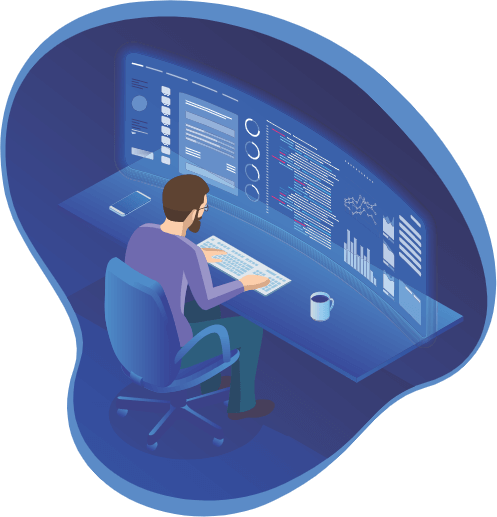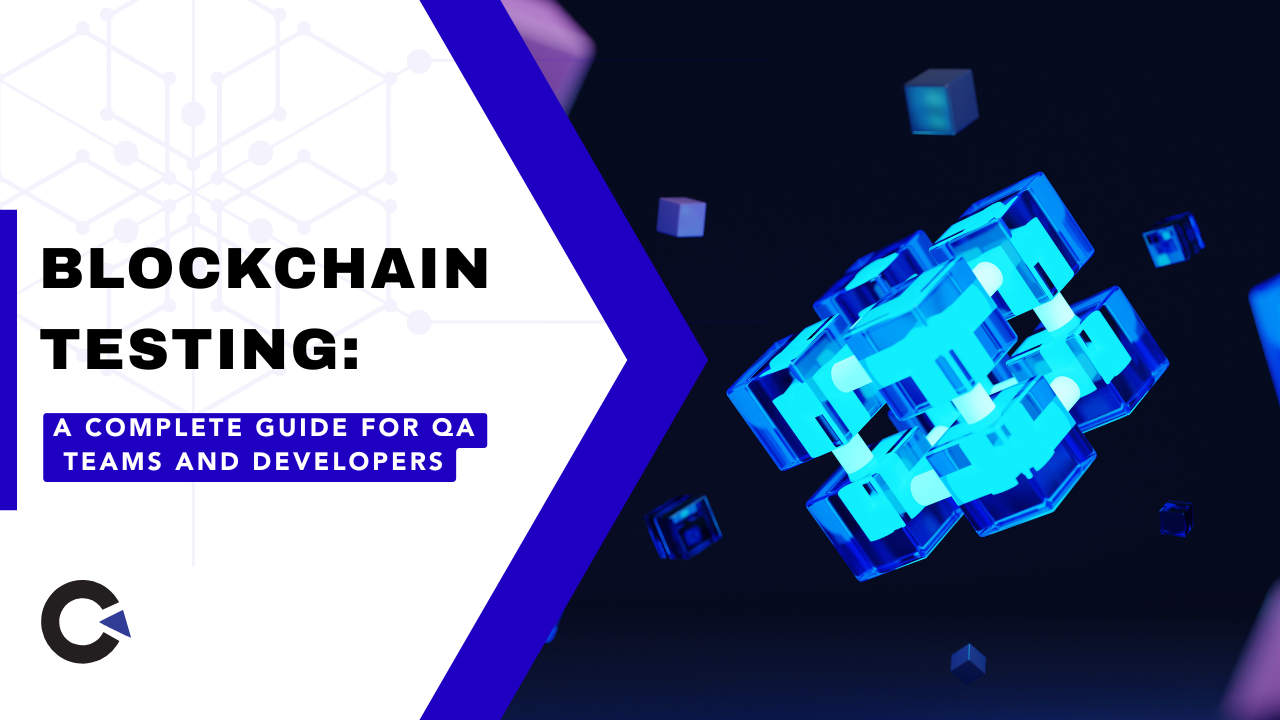
by admin | Sep 21, 2019 | Software Testing, Fixed, Blog |
Organizations continue to struggle to mesh app quality with agile using automation and other best practices. Many teams are struggling to increase the QA team’s effectiveness without proper understanding about the QA process.
Quality assurance (QA) is any systematic process of determining whether a product or service meets specified requirements. QA establishes and maintains set requirements for developing or manufacturing reliable products. A quality assurance system is meant to increase customer confidence and a company’s credibility, while also improving work processes and efficiency, and it enables a company to better compete with others.

The below is the Quality Assurance Checklist that everyone should follow:
- Establish QA facilitation
- Implement a Quality Management Process
- Conduct process review
- Create a report on the project status
- Perform process compliance review
- Identify process improvement areas
- Create process trainings
Software Quality AssuranceSoftware quality assurance (SQA) systematically finds patterns and actions needed to improve development cycles. SQA has become important for developers as a means of avoiding errors before they occur, saving development time and expenses. Even with SQA processes in place, an update to software can break other features and cause defects — commonly known as bugs. There have been numerous SQA strategies. For example, Capability Maturity Model Integration (CMMI) is a performance improvement-focused SQA model. CMMI works by ranking maturity levels of areas within an organization, and it identifies optimizations that can be used for improvement. Rank levels range from being disorganized to being fully optimal. Software development methodologies have developed over time that rely on SQA, such as Waterfall, Agile and Scrum. Each development process seeks to optimize work efficiency.
Waterfall is the traditional linear approach to software development. It’s a step-by-step process that typically involves gathering requirements, formalizing a design, implementing code, code testing and remediation and release. It is often seen as too slow, which is why alternative development methods were constructed.
Agile is a team-oriented software development methodology where each step in the work process is approached as a sprint. Agile software development is highly adaptive, but it is less predictive because the scope of the project can easily change.
Scrum is a combination of both processes where developers are split into teams to handle specific tasks, and each task is separated into multiple sprints.
To implement a QA system, first set goals for the standard. Consider the advantages and tradeoffs of each approach, such as maximizing efficacy, reducing cost or minimizing errors. Management must be willing to implement process changes and to work together to support the QA system and establish standards for quality. From the above said models, most of the companies adopted Agile and it gains more popularity now a days. Testing in an agile environment is different than the traditional methodologies such as waterfall. Agile is an iterative model of delivery which requires continuous collaboration between the team members, providing quick feedback and be able to self-manage. Agile testers know that they are part of the delivery team and that there is no separation of testing phase and development phase, but rather testing is a continuous activity which happens as part of the development.
Test AutomationTest Automation is vital to the success of an agile project because automated tests can provide fast and reliable feedback to the development team. Tests can be automated at different levels with different purposes. A good agile tester with sound technical knowledge is able to:
- Determine and advise which tests should be automated at which layer.
- Choose the right set of tools to help the testing
- Help developers in writing automated tests and analyze the results of the automated tests.
- Create different automation suites, such as smoke pack, full regression pack, end-to-end regression pack, etc.
- Minimize the execution time for the automated tests in order to obtain quick feedback
- Execute tests on a continuous basis
- Provide valuable metrics to the business
- Utilize the facilities of different testing tools to help with manual testing
Provide Continuous FeedbackOne of the key benefits of agile development is being able to deliver a working solution quickly. In order to move fast, we need to get quick feedback on each versions of the code.
We should be able to know, within a short period of time, whether new or updated code has caused any regression bugs. Hence, one of the objectives of testing in agile is to provide relevant information about the health of the application quickly. When issues are reported early, we can fix them straight away and move on. If the feedback loop is delayed, the team has moved on and it becomes more difficult and time-consuming to identify the root cause of the issue.
Feedback can be provided in many forms such as:
- Pair Programming
- Code Reviews
- Unit Tests
- Automated Integration Tests
- Automated Acceptance Tests
- Automated Regression Tests
- Exploratory Testing
The agile tester should ensure that proper and effective tests are written and executed at each level and should know that testing is a continuous activity that happens as part of the development. Thus a proper knowledge in latest tools and techniques and continuous feedback on product/ project will help the team to increase the team effectiveness.

by admin | Sep 23, 2019 | Software Testing, Fixed, Blog |
The realm of software testing has undergone some significant and positive changes and shifts in the various types of processes and testing. One of the most noteworthy changes relates to the responsibility and how of testing. Top software testing companies now propagate that functional testing is the joint responsibility of the QA team in conjunction with developers. While developers have accountability to deliver the app to the QA team, it is the job of the QA team to concentrate on automating the tests, building test infrastructure, and ensuring the speedy uncovering and removal of bugs and defects.
Some front-end developers believe that the additional responsibility of functional testing could take away from the core jobs and slow down the entire process of getting the product to market. However, experts at any leading QA company would differ – new testing methods and tools have made functional testing a lot simpler and easier, with its benefits outweighing the time and efforts invested into this form of testing.

Additionally, working together with the QA team means that developers do not need to focus on regression testing and bug removal. By integrating functional testing as part of the developing schedule, new features and time to market are significantly hastened. Without functional testing at the start, bugs and new features would take up a lot more time and effort. We will look at the top 7 ways that developers can control functional testing, and gain mastery over it.
The experts at a software testing company would tell you that testing is best done in a testing lab – and not on the machine. It makes business sense for organizations to have a local or cloud, testing lab. The QA automation testing team must use the local lab and its methods or work with cloud-based testing tools. This saves time and effort in managing infrastructure
Since timing and management of test cases are of prime importance – it would be better to create a test case in functional testing while creating a feature. It is imperative to be aware of some components while writing a feature – page objects for a new feature, URLs associated with the feature, and others. It would make sense to note down these test details in pseudo, and even though this does not create the test, it does help to remember the type of Software testing, and simply use the details to swiftly create them when required.
Without segregating visual and user flow test cases, you could end up with a never-ending test case. The reason is that user flow test cases need to have a higher level of complexity and include page objects and their interactions with them. The test needs to emulate user actions and can flow to several pages. On the other hand, it is easier to script a visual test – load and snapshot all the pages and compare the screenshots to recognize any current changes in the application. Since everything is tested visually it provides a view of all major changes from any previous releases – therefore predicting this test is not required.
Remember regression tests are important. Even though the QA team would run such tests, any problems could mean more work for developers. To ensure that there are no unwanted surprises, experts at top QA companies recommend the use of Continuous Integration tools, which automatically run regression tests. These tests would be written by someone else, all developers need to do is hit the run button while introducing new scripts to the suite.
Carefully select and use open source tools to ensure optimal benefit.
Everyone involved in functional testing must be aware of test scripts and the management of the suite. While the QA team would review scripts, the developers must ensure the tests are distinguishable and know which ideas can be shortened or cut off. This is important since failed scripts due to the removal of functionality could cause major problems in test runs.
Remaining calm and focused on functional testing in addition to all responsibilities as a developer, is important and an integral part of the process.
In Conclusion:
The quality of applications/systems/software is the responsibility of all those involved in functional testing. Developers and QA teams both are now an integral part of the testing process. Functional testing is amongst the more important testing processes – verifying the functionality of any software product. Businesses must partner with a top software testing outsourcing company to ensure they gain the benefits of functional testing – connect with us to work with experts across all realms of software testing.

by admin | Aug 18, 2019 | Software Testing, Fixed, Blog |
Software Testing is undertaken essentially to detect glitches in a software application or package. Such activities are driven by the larger goal of ensuring a flawless customer experience with the end-product. However, certain issues pertaining to nomenclature remain inconclusive. The severity of a software bug and the priority assigned to such a bug connote a variety of things. The true meaning of these terms, if left unexplored, exerts a certain stress on the outcomes of Quality Assurance services.
Severity: Many Grades
This term is deployed by Software Testing professionals to denote the absolute gravity which defines an undesirable incident during the use of a software product. Every QA Company must acknowledge the severity of such an incident and assess the impact of such a glitch on product performance. In line with this, test professionals may grade severity in terms of ‘critical’ or ‘major’ or ‘minor’ or ‘low’. Certain experts aver that the assigned level of severity to a bug implies the high quality of testing practices undertaken by a Software Testing Company.
Severity: How Critical?
The QA Services offered by a Software Testing Company consider the impact of severity in broad brush strokes. They define the term as the extent to which a particular bug/defect/glitch could create an impact on the normal operation of a software application. Some instances of severity appear when an e-commerce app fails to load despite repeated inputs; a digital shopper faced with an odd situation wherein a shopping app accepts an order but cancels it after a certain interval of time.

Severity: Critical
Glitches in software products that seriously hamper the efforts of Software Testing professionals represent critical grade of severity. Such bugs deserve the focused attention of testers who must work to attain immediate resolution. Similarly, critical bugs can result in the repeated crashing of an application, wherein testers are unable to proceed with assigned QA Services. In a similar vein, catastrophic system failures qualify for critical grade of severity. For instance, email systems that crash immediately after a user has entered credentials represent critical bugs that destroy the user experience; the QA Services offered by test professionals must remediate these immediately.
Priority
This term implies the act of prioritizing a defect based on the demands of business requirements and the severity of the defect. Priority connotes the importance (or urgency) of remediating a glitch in modern software applications. Typically, testers working in the domain of modern Software Testing services must invoke priority by viewing a malfunctioning product from the perspective of the end user. In common terms, bug priority can be assigned various values such as ‘low’ or ‘medium’ or ‘high’ or ‘immediate’. Veteran testers advocate the use of said matrix because prioritizing a bug in the correct manner helps boost the quality of the software development life cycle.
Priority: Conflict with Severity
Legacy Internet browsers typically remain behind the curve in terms of aesthetics and pure functionality. Such a scenario may spotlight the deficit in legacy browsers by rendering sub-standard views of an application. This, per se, indicates a major glitch in the code underlying the legacy browser, thereby indicating a high level of severity. However, Quality Assurance professionals may allocate a low priority to this glitch owing to the fact most Internet users update their browsers, thereby ruling out chances of mass malfunction in the display system. In view of this, the typical QA Company may not consider the glitch worthy of immediate attention at any level.
High Priority
An experienced team of Software Testing professionals may consider muddled views of a website to be a high priority target for bug remediation. Such an action finds justification since a late-edition browser would be unable to create sharp displays of a website. Hence, the code underlying the website deserves the immediate attention of QA Services professionals who must re-calibrate the visual representation of said website. Experts note that there is the lack of serious performance issues in such a scenario; however, Software Testing professionals must remediate the glitch in the interests of driving a smooth user experience.
In Conclusion
This analysis should encourage Quality Assurance engineers to consider high priority bugs at the expense of those marked high severity. This choice of action flows from the necessity of directing human empathy to the common user of digital products and services. Moreover, testers employed by a QA Company should work to develop a deep understanding of how various bugs and flaws may impact the experience of an end user. Such awareness should form the core rationale that powers the range of services that center on Quality Assurance. Additionally, product managers of a software application must work to create clear distinctions between the terms ‘severity’ and ‘priority’. Radical improvements in the scope and performance of Software Testing services would follow, and we excel in this realm as well. Connect with us to keep your applications and software bug free and of the highest quality.

by admin | Aug 25, 2019 | Software Testing, Fixed, Blog |
In the modern-day Software Engineering arena, Continuous Testing is a key mechanism for enabling the delivery of quality software at speed. With the help of the Continuous Testing process, executed through automated tests, an organization can get instant feedback on the business risks linked to its newest software release candidate.
From the perspective of a business, any top software testing company must be equipped to convey the benefits of Continuous Testing to the management of an organization. Towards that end, testers should learn the art of explaining the Continuous Testing process to the management in an effective manner.
Accentuate the Goals and Priorities of the Organization
With an organization chiefly focused on its goals and priorities, testers can heighten the need for Continuous Testing to the management by elucidating the alignment of testing and software quality efforts with business expectations. It should clearly be pointed out that the Continuous Testing helps create a prioritized list of tasks. The different teams can focus their efforts on the quality tasks that are consistent with the objectives of the organization. The fact is that the workforce of a company would need to focus on the core business, and it makes business sense to outsource QA and Software testing to a renowned and highly expert company.
Talk about the Advantages of a Test-first Approach
It is pertinent that testers talk about a test-first approach when they explain Continuous Testing to the management. A test-first approach can increase test coverage, enabling the testing team to ensure the working of the features of an application as expected. Continuous Testing also enables testers to quickly discover whether any change breaks the existing automated checks or whether some other unanticipated conditions need to be addressed. Hence, testers can focus on delivering a quality product.

Emphasize the Possibility of Speedy/Frequent Delivery of Quality Software
Software testing companies generally espouse Continuous Testing by emphasizing on the ability of the process to deliver quality software quickly and continually. Since quality software can meet expectations for an acceptable risk level, testers should communicate to the management the heightened gains in terms of reduced time and effort in finding and fixing bugs. This can enable developers to prevent the progression of bugs to a subsequent stage in the software development lifecycle (SLDC). Thus, Continuous Testing ensures that no major issues exist within the software at any stage of development.
Emphasize the Possibility of Speedy/Frequent Delivery of Quality Software
Software testing companies generally espouse Continuous Testing by emphasizing on the ability of the process to deliver quality software quickly and continually. Since quality software can meet expectations for an acceptable risk level, testers should communicate to the management the heightened gains in terms of reduced time and effort in finding and fixing bugs. This can enable developers to prevent the progression of bugs to a subsequent stage in the software development lifecycle (SLDC). Thus, Continuous Testing ensures that no major issues exist within the software at any stage of development.
Highlight the Benefits of Optimizing the Testing Process
With Agile and DevOps methodologies pivoting around continuous improvements, testers should put the spotlight the need for regular assessment and tight feedback loops for optimizing the testing process. The management should be apprised about the importance of metrics amassed because of the constant execution of a broad set of continuous tests all through the SDLC. The amassed metrics can be re-assessed for increasing the effectiveness of the tests. The repeated review and optimization of the test suite is also beneficial for eliminating redundancy and maximizing business risk coverage.
Stress on the Significance of Actionable Feedback at Different Delivery Stages
Continuous Testing holds immense significance with regard to delivering actionable feedback. This aspect should be emphasized when addressing the management and highlighted against the backdrop of the productive impact of feedback at various stages of the delivery pipeline. The management should have adequate knowledge about the role of Continuous Testing in enhancing code quality because of the potential improvements resulting from regular feedback. In addition, extensive automated testing can realistically determine the end-user experience across the associated front-end and back-end technologies.
Draw Attention to Early Detection of Risks
Testers need to ensure that the management understands the importance of Continuous Testing by underscoring the significance of designing tests for detection or prevention of risks associated with the release of the software. With Continuous Testing, functional requirements can be tested by using API testing, Unit Testing, Integration Testing, and System Testing. Further, non-functional testing techniques like Static Code Analysis, Security Testing, and load Testing can determine whether an application meets the performance and security expectations.

Underline the Cost-saving Benefits of Continuous Testing
It is imperative for testers to highlight the cost-saving benefits of Continuous Testing. The management would be more inclined to take a favorable view of software testing services if the testing process would be timesaving and cost-effective endeavor for the organization. The comprehensive scope of Continuous Testing can enable testers to detect errors early in the development process. Therefore, leveraging Continuous Testing can yield substantial savings in cost, accelerate the software’s time to market, and generate sustainable revenue for the organization.
In Conclusion:
An expert software testing company must master the art of explaining the crucial Continuous Testing technique to the management from various perspectives. The management must be aware of the advantage of testing the software continuously to ensure a strong feedback system can be created for controlling business risks. In general, given the rapid pace and increasing complexity of software delivery, it is vital for an organization focused on releasing quality software on a continuous basis to endorse Continuous Testing. To work with experts in this realm and more – connect with us.

by admin | Aug 24, 2019 | Software Testing, Fixed, Blog |
Generating random test data during test automation execution is an easier job than retrieving from Excel Sheet/JSON/YML file. If you start maintaining dummy test data in an external file, it will increase test data feeding time before you begin the automated regression test suite.
You can generate random test data using Silly Python library if you have Selenium automated test suite in Python. Let’s see how to use it.
Installation
pip install silly
[/code]
How to use
import silly
name = silly.name()
print("my name is {}".format(name))
# my name is colonel beefheart
print("you should not contact me at {}".format(silly.email()))
# you should not contact me at [email protected]
number = silly.number()
print(number)
# 7
number_in_words = silly.numberwang()
print(number_in_words)
# Eighty Eight
silly.paragraph()
# Youssef Chiffon needs a cluster of white dances, badly.
# Cabinet Management Systems is the best company in Bagsberg.
# Armourshire is in North Testonia. Fear space!
silly.paragraph(length=1000)
# oh no! that was the length in SENTENCES!
# what have we done!
# oh well
# let's do this anyways:
#
# Cheekshop is the best company in Birmingplace.
# Cornelius Slabmove will braise a heart, seventy-two rum staffs,
# and one hundred and thirty-two plans. Mysteriousshire Plumbing
# is the best company in Coasttown. Your mom can't wait to punch
# one hundred and thirty-seven brown socks in Jerkhall....
[/code]

by admin | Aug 23, 2019 | Software Testing, Fixed, Blog |
Communication is a crucial soft skill that software testers must possess in order to complete a software testing project successfully. Proactive communication is the hallmark of a proficient test team because it enables the team members to correspond effectively with one another, avoid misinterpretation of information, and report defects efficiently to improve the quality of the software under testing. The competence and commitment of a QA company are generally evident from its well-equipped team of testers and a robust communication channel between them for delivering relevant solutions.

Communication Enables the Test Team to Work as a Cohesive Unit
Communication promotes a shared understanding of the objectives of the testing project among the testers working on the project. A Test Manager with good communication skills can clearly convey the roles and responsibilities of the members of the test team at different stages of the project – from test planning to product delivery. In a properly coordinated team, any issues affecting the testing process can be quickly resolved. Testers complement each other to work together as a cohesive unit and ensure the rapid delivery of a quality software product.
Communication Lets Testers Put Across Their Ideas Clearly
Interpersonal skills are extremely important for QA professionals especially in Agile and DevOps environments that focus on continuous development, continuous integration, and continuous delivery. Since it is the job of testers to examine the code thoroughly and log identified defects or errors, it is imperative for them to communicate their ideas from time to time. Adequate communication between the development and testing teams reassures the testers that their efforts are in line with the test requirements and performance needs. In addition, the sharing of ideas and suggestions can give everyone an opportunity to progress.
Communication Helps New Testers Easily Come Aboard a Testing Project
For the enhancement of the testing project, QA companies may sometimes make changes amid the testing lifecycle due to which new testers may join the project. In such an event, the past communication between the test team members can be very useful for the new entrants to the team. The transparency in team interactions allows new testers to assume prompt charge of their responsibility. Hence, communication is an excellent mechanism that helps new testers come aboard an ongoing project.
Communication Reinforces Vital Messages between Various Testing Teams
When various test teams undertake a testing project, communication is the most effective tool at the disposal of the Test Manager, to reinforce critical messages frequently. This enables the testers to focus on important guidelines and adjust to the changing requirements and changing schedules. Thus, reinforcement of critical messages fortifies the collaborative efforts and prioritizes the testing tasks. In particular, it gives the testers a clear understanding of the tasks and objectives as well as the perception of the client.
Communication Allows the Testing Company to Correspond with the Stakeholders
The best QA companies always strive to keep all the stakeholders in the software development process involved and informed when the software is under testing. Towards this end, regular communication with the stakeholders is essential for apprising them of the status of the testing project at any given point of time. Due to the fast-paced nature of the testing process, it is mandatory for the testing company to put a communication procedure in place to report the progress of the process to all stakeholders, thereby enabling them to know whether the process is yielding the expected outcomes or needs altering.
Communication Paves the Way for a Suitable Meeting Policy
A proper communication channel can facilitate a testing company to lay down a suitable meeting policy. With Agile and DevOps changing the software development scenario in recent times, a meeting policy is necessary for streamlining the process of communication between teams working from different geographical locations. As face-to-face meetings may not always be possible, top QA companies generally conduct meetings between different teams with the help of video conferencing tools like Skype and Google Hangouts.
In Conclusion:
Effective communication is the key to the successful completion of a software testing project. A systematic communication method used by a testing company unfolds a transparent and flexible approach which can augment the planning and execution of the project, encouraging the testers to perform their tasks efficiently. In addition, communication also enables the testing company to keep the stakeholders informed about how the project is advancing. Overall, communication lays the foundation for the growth of the test team, accomplishment of project objectives, and overall client satisfaction resulting from the delivery of a high-quality software product. Transparent communication is a culture we follow – connect with us to know more.

































